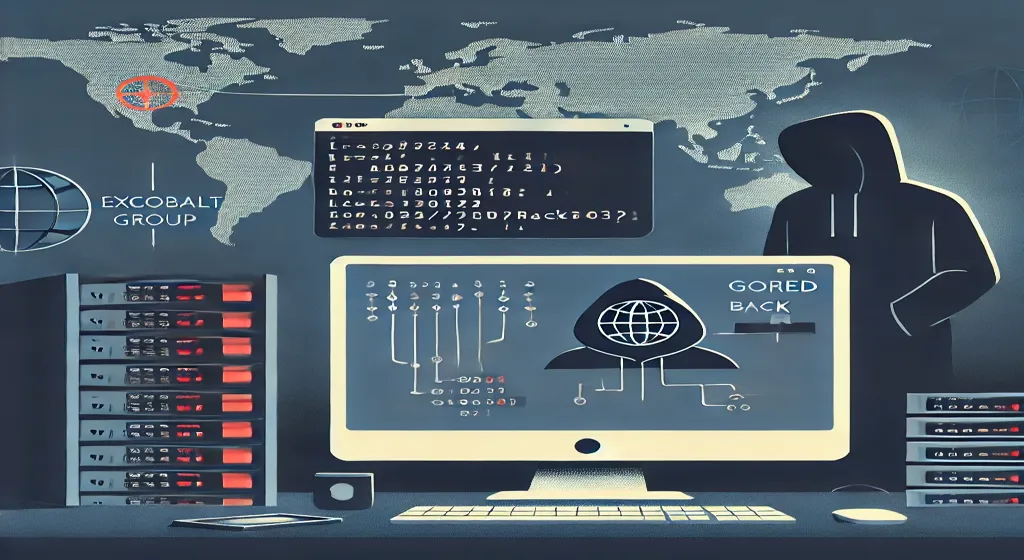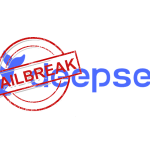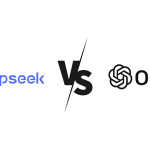- ExCobalt Cyber Group Strikes Russian Sectors with Advanced GoRed Backdoor
- The Rise of ExCobalt
- GoRed Backdoor: Technical Deep Dive
- Tunneling Techniques and Evasion Strategies
- ExCobalt’s Broader Toolset and Attack Strategies
- Supply Chain Attacks and Initial Access
- Impact on Cybersecurity and Defensive Measures
ExCobalt Cyber Group Strikes Russian Sectors with Advanced GoRed Backdoor
The dynamic and ever-evolving landscape of cybersecurity necessitates a heightened level of vigilance as cybercriminals continuously adapt, refine, and enhance their tactics. One of the latest significant developments in this sphere is the emergence of the GoRed backdoor, attributed to the notorious ExCobalt cybercrime group. Rooted in the infamous Cobalt Gang, ExCobalt has demonstrated an alarming level of precision and stealth in targeting various sectors across Russia. This comprehensive article delves into the intricate technical aspects of the GoRed backdoor, explores the broader arsenal of ExCobalt, and examines the profound implications of their activities for global cybersecurity.
The Rise of ExCobalt
ExCobalt is a highly sophisticated cyber espionage group that has evolved from the remnants of the Cobalt Gang, a collective that gained notoriety for its relentless attacks on financial institutions worldwide. The group’s evolution is underscored by its adoption of cutting-edge techniques and tools, marking a significant shift from its origins.
Since its emergence, ExCobalt has focused its efforts on conducting cyberattacks with an emphasis on espionage, predominantly targeting Russian entities. These targets span a wide range of industries, including government, telecommunications, metallurgy, and software development, indicating the group’s broad operational scope and strategic objectives. In 2022, ExCobalt notably integrated elements from the CobInt tool—previously utilized by the Cobalt Gang—into its operational framework. This integration signaled a transformation in their approach, characterized by a higher degree of sophistication. ExCobalt’s attack strategies frequently involve complex supply chain compromises and the exploitation of previously compromised contractors, highlighting their meticulous planning and execution.
GoRed Backdoor: Technical Deep Dive
Evolution and Core Features
GoRed represents a new level of sophistication in the arsenal of Ex Cobalt. This Golang-based backdoor is a testament to the group’s advanced capabilities, having undergone multiple iterations, each with enhancements that bolster its effectiveness in cyber espionage operations. The key features of GoRed include:
- Credential Harvesting: GoRed is equipped with robust capabilities to harvest sensitive credentials from compromised systems. This feature enables Ex Cobalt attackers to deepen their access to networks and systems, thereby increasing the potential for sustained espionage activities.
- Process and Network Monitoring: The backdoor possesses the ability to gather detailed information on active processes, network interfaces, and file systems within the compromised environment. This allows ExCobalt attackers to comprehensively map out and understand the target environment, laying the groundwork for more targeted and effective attacks.
- Command and Control Communication: One of GoRed’s most notable features is its use of advanced tunneling techniques for command and control (C2) communication. This includes DNS/ICMP tunneling, WebSocket Secure (WSS), and Quick UDP Internet Connections (QUIC). These protocols allow GoRed to communicate with its C2 server while evading traditional network defenses, making it a formidable tool for sustained espionage by ExCobalt.
- Reverse Shell Access: GoRed provides ExCobalt attackers with the capability to establish reverse shell access, enabling them to remotely control infected systems with precision. This feature is critical for maintaining long-term access to compromised environments.
Tunneling Techniques and Evasion Strategies
GoRed’s utilization of DNS/ICMP tunneling is one of its most innovative and challenging features from a defensive standpoint. By encapsulating malicious data within legitimate-looking traffic, GoRed can effectively evade standard security measures, rendering many traditional detection methods ineffective. This ability to blend malicious traffic with normal network communications makes GoRed exceptionally difficult to detect and neutralize.
The use of protocols like WSS and QUIC further obfuscates its presence, allowing the backdoor to blend seamlessly with normal network traffic and avoid detection by conventional network security tools. These protocols, which are typically used for secure web communications and low-latency connections, enable GoRed to maintain a covert and persistent presence within the target network. The continuous evolution of GoRed is evident in its increasingly complex command structure and the regular introduction of new features. For example, the 0.1.4 version of the backdoor incorporated additional capabilities, such as reverse shell functionality via WSS and DNS protocols, enhanced data collection features, and new commands for monitoring the victim’s file system and network interfaces.
This constant refinement underscores Ex Cobalt’s commitment to maintaining an edge in the competitive and high-stakes world of cyber espionage. By regularly updating their tools and tactics, Ex Cobalt ensures that their operations remain effective against even the most sophisticated defense mechanisms.
ExCobalt’s Broader Toolset and Attack Strategies
ExCobalt’s toolkit is extensive, encompassing a variety of tools and exploits that allow the group to maintain its operations with a high degree of flexibility and effectiveness. Some of the tools commonly used by ExCobalt include:
- Metasploit: A widely used exploitation framework that ExCobalt employs to gain initial access to target systems.
- Mimikatz: A tool for extracting credentials from Windows systems, often used in lateral movement within a compromised network.
- ProcDump: A command-line utility that allows ExCobalt attackers to dump process memory, which can be used to extract sensitive information.
- SMBExec: A tool that facilitates remote command execution via the SMB protocol, often used in post-exploitation activities by ExCobalt.
- Spark RAT: A remote access Trojan that provides persistent access to compromised systems, a key tool in ExCobalt’s arsenal.
- Linux Privilege Escalation Exploits: ExCobalt leverages known vulnerabilities (e.g., CVE-2019-13272, CVE-2021-3156, CVE-2021-4034, and CVE-2022-2586) to gain elevated privileges on Linux systems, furthering their ability to control compromised environments.
Supply Chain Attacks and Initial Access
A cornerstone of ExCobalt’s strategy is the execution of supply chain attacks to gain initial access to target environments. By compromising components integral to the development or deployment of legitimate software within a target organization, ExCobalt can stealthily insert malicious code or backdoors. This method effectively bypasses many traditional security measures, as the compromised software is typically trusted by the organization. The strategic use of supply chain attacks underscores ExCobalt’s ability to infiltrate highly secured environments and establish a foothold for prolonged cyber espionage activities.
Impact on Cybersecurity and Defensive Measures
The discovery of GoRed, coupled with the broader activities of ExCobalt, highlights the escalating threat posed by advanced persistent threat (APT) groups. These entities are increasingly adopting sophisticated techniques designed to evade detection and maintain long-term access to their targets. The use of advanced tunneling protocols, innovative C2 communication methods, and reverse shell capabilities within GoRed exemplifies the need for organizations to rethink their cybersecurity strategies.
To effectively combat these threats posed by ExCobalt, organizations must implement advanced threat detection systems capable of identifying and mitigating such sophisticated attacks. This involves leveraging behavioral analytics, machine learning models, and threat intelligence platforms that can detect anomalies in network traffic and identify indicators of compromise (IoCs) associated with GoRed and similar threats. Additionally, organizations should prioritize the continuous updating of their security tools and processes to keep pace with the rapidly evolving threat landscape.
Conclusion
ExCobalt’s relentless focus on Russian sectors using the GoRed backdoor is a clear indication of the evolving nature of cyber threats. The combination of advanced tunneling techniques, sophisticated command and control mechanisms, and a broad toolset makes GoRed a formidable challenge for cybersecurity professionals. To protect against such threats, organizations must prioritize advanced security solutions and continuously adapt their defenses to stay ahead of these ever-evolving threats.To safeguard against the advanced threats posed by groups like ExCobalt, organizations must adopt a proactive approach to cybersecurity . This includes investing in next-generation security tools, regularly updating threat intelligence capabilities, and fostering a culture of security awareness across all levels of the organization.







